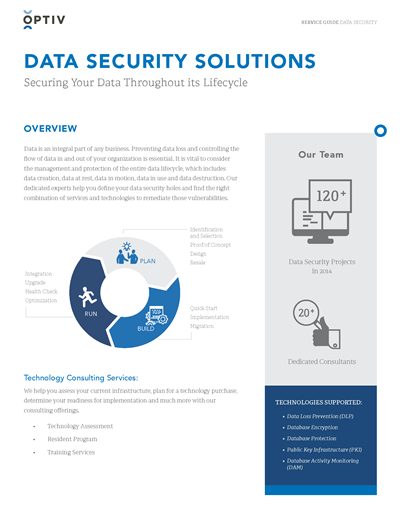Checking Out the Importance of Data Damage in the Context of Computer Protection Services and Protecting Confidential Information
In a period where data violations are increasingly common, the importance of reliable information destruction can not be overemphasized. What methods can companies carry out to enhance their data damage procedures?
Understanding Information Damage
Information damage is an essential component of computer protection that entails the long-term removal of information from storage devices to avoid unapproved gain access to and possible data breaches. In an increasingly electronic landscape, organizations deal with increased threats connected with delicate information being improperly accessed or exploited. Efficient information devastation safeguards versus these risks, ensuring that confidential dataâEUR" such as client information, copyright, and economic recordsâEUR" can not be recuperated after disposal.
Recognizing the importance of information devastation extends past mere compliance with legal and regulative structures; it is vital for keeping business stability and count on. When data is poorly handled or inadequately damaged, the effects can be severe, consisting of economic loss, reputational damages, and legal responsibilities.

Techniques of Information Eradication

One common approach is information wiping, which includes overwriting existing information with arbitrary patterns multiple times. This strategy provides the original data irretrievable, making it a preferred option for companies seeking to secure personal details.
Another method is degaussing, which utilizes a powerful electromagnetic field to disrupt the magnetic domain names on storage tools, efficiently getting rid of the information. This method is specifically effective for magnetic media but is not applicable to solid-state drives.
Physical destruction is an additional durable technique, squashing or involving the shredding of storage space gadgets. This technique assurances that information healing is essentially difficult, making it excellent for extremely delicate info.
Lastly, security can function as a corresponding method to information removal. By securing information prior to removal, organizations can include an added layer of security, ensuring that even if residues are recuperated, they continue to be inaccessible without the decryption secret. Each approach must be selected based on the degree of information sensitivity and the specific security demands of the organization.
Legal Conformity and Information Safety
Organizations should navigate a complex landscape of legal requirements connected to data safety and security, particularly after implementing techniques of data obliteration. Different regulations, such as the General Data Protection Guideline (GDPR) and the Medical Insurance Mobility and Responsibility Act (HIPAA), enforce stringent standards on how companies should deal with and get rid of of delicate data. Failing to abide by these laws can lead to considerable legal consequences, consisting of significant penalties and reputational damages.
Data destruction procedures should be thoroughly recorded to show conformity with appropriate legislations and standards. This documents not just acts as proof of adherence to legal commitments but also highlights a dedication to protecting sensitive info. Organizations should likewise develop clear policies relating to information retention and destruction timelines, ensuring that information is not held longer than needed.

Furthermore, routine news audits and analyses of information damage practices are vital to maintain conformity and adapt to advancing lawful structures (data destruction). By proactively dealing with legal demands, companies can minimize dangers connected with data breaches and demonstrate their dedication to information safety and security. Ultimately, prioritizing legal conformity in information damage procedures is not just a regulative obligation, yet a basic facet of a robust information protection strategy
Influence On Business Track Record
The reputation of a company can be significantly influenced by its strategy to information destruction and management. In today's digital landscape, where data breaches can take place anytime, the failing to correctly throw away sensitive information can cause serious consequences. Organizations that inadequately manage data destruction danger revealing personal client information, which not only goes against privacy regulations but likewise wears down depend on amongst stakeholders and customers.
A damaged reputation can lead to lowered customer loyalty, as customers end up being reluctant to engage with an organization that has actually shown carelessness in shielding their information. In addition, negative attention surrounding an information violation can have a long lasting impact, as possible customers may be hindered by the viewed lack of security. This can result in a direct decrease in income and market share.
Additionally, organizations that focus on information devastation as part of their safety strategy can boost their reputation by showcasing their commitment to protecting sensitive information. By taking on strict information administration methods, organizations can not only minimize threats however additionally position themselves as discover this credible entities in their corresponding markets, therefore enhancing their general brand picture.

Best Practices for Secure Disposal
Carrying out ideal methods for safe and secure disposal of information is important for mitigating risks linked with information violations and making sure compliance with privacy regulations. Organizations should embrace an extensive data disposal plan that details treatments for both physical and electronic data devastation.
For physical data storage space devices, such as disk drives, shredding or degaussing is advised to stop data recuperation. In addition, companies ought to maintain a chain of guardianship documentation during the disposal procedure, ensuring liability and traceability of disposed items.
For digital data, making use of software application that adheres to market requirements for information wiping is essential. This software application should overwrite existing data numerous times, making healing virtually impossible. It is additionally crucial to verify the performance of the data devastation procedure with audits or third-party analyses.
Educating staff members on protected disposal techniques includes one more layer of security, as human mistake can commonly try this site lead to data direct exposure. On a regular basis updating and assessing disposal plans makes sure alignment with progressing regulations and technical developments. By carrying out these ideal practices, organizations can considerably minimize the danger of unapproved information gain access to and boost their general data security method.
Final Thought
In verdict, data devastation is a basic facet of computer security services that ensures the security of secret information from unapproved access. Carrying out reliable approaches of data obliteration, adhering to lawful compliance, and recognizing the influence on company online reputation are important components of a comprehensive information security approach. By embracing finest practices for protected disposal, organizations can cultivate depend on with clients and safeguard delicate information, ultimately contributing to an extra safe and secure electronic landscape.
In an era where information violations are increasingly usual, the significance of effective information damage can not be overstated.Data devastation is a critical component of computer system protection that includes the irreversible removal of information from storage space devices to prevent unapproved gain access to and potential information breaches. Organizations must likewise develop clear plans pertaining to information retention and destruction timelines, making certain that data is not held longer than needed.
By proactively addressing legal requirements, organizations can alleviate threats associated with information violations and demonstrate their commitment to data safety and security (data destruction). Inevitably, focusing on legal compliance in information damage procedures is not just a regulative obligation, however a basic element of a robust information safety method
Comments on “How Robust Data Destruction Boosts Your Overall Cyber Security Steps”